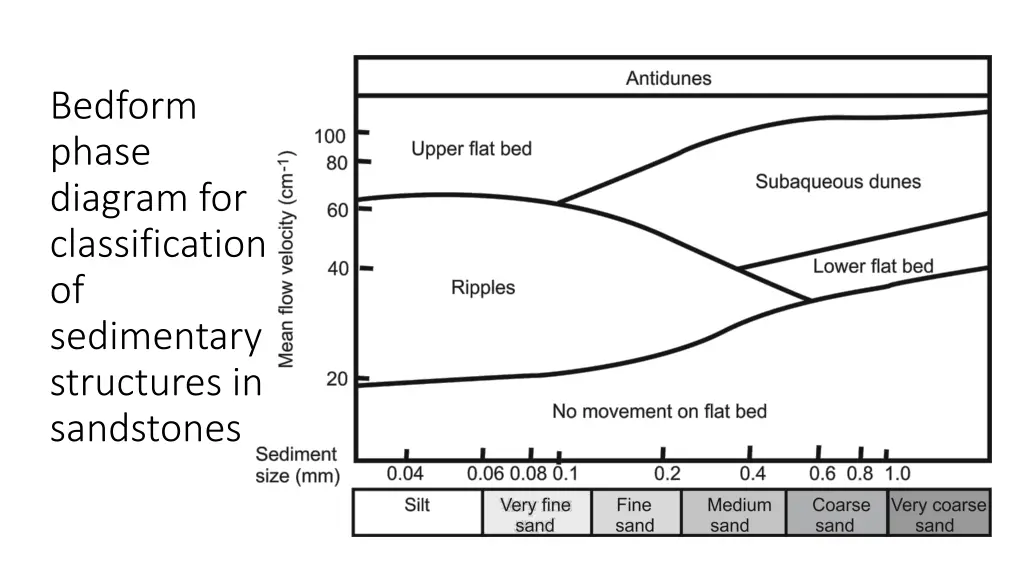
Sedimentary Structures in Sandstones
Explore the relationship between grain size, flow rate, and the formation of sedimentary structures in sandstones using the bedform phase diagram. Discover how different flow rates lead to the development of features like antidunes, trough cross bedding, tabular cross bedding, trough cross lamination, and tabular cross lamination. Learn how sediment grain size influences the types of structures formed and how to distinguish between various formations based on characteristics like primary current lineation.
Download Presentation

Please find below an Image/Link to download the presentation.
The content on the website is provided AS IS for your information and personal use only. It may not be sold, licensed, or shared on other websites without obtaining consent from the author. If you encounter any issues during the download, it is possible that the publisher has removed the file from their server.
You are allowed to download the files provided on this website for personal or commercial use, subject to the condition that they are used lawfully. All files are the property of their respective owners.
The content on the website is provided AS IS for your information and personal use only. It may not be sold, licensed, or shared on other websites without obtaining consent from the author.
E N D
Presentation Transcript
Bedform phase diagram for classification of sedimentary structures in sandstones
The Bedform phase diagram is used to show the relationship between grain size and flow rate and to classify the sedimentary structures formed.
At very high flow rates, antidunes are formed with all grain sizes Trough cross bedding (made by 3D dunes) Tabular cross bedding (made by 2D dunes) Trough cross lamination (made by 3D ripples) Tabular cross lamination (made by 2D ripples)
Trough cross bedding (made by 3D dunes) Tabular cross bedding (made by 2D dunes) Trough cross lamination (made by 3D ripples) At the same flow rate trough cross lamination may form OR tabular cross bedding, depending on the sediment grain size. Tabular cross lamination (made by 2D ripples)
Trough cross bedding (made by 3D dunes) Tabular cross bedding (made by 2D dunes) Trough cross lamination (made by 3D ripples) When the sediment has a specific grain size, the sedimentary structures formed will be dependent on the flow rate of water: 2D ripples, 3D ripples, 2D dunes, 2D dunes Tabular cross lamination (made by 2D ripples)
Trough cross bedding (made by 3D dunes) It is difficult to distinguish between the upper and lower flat bed. Tabular cross bedding (made by 2D dunes) The lower flat bed forms with coarse sand or larger grain size. Trough cross lamination (made by 3D ripples) The Upper flat bed forms with all sizes of grains. For sediment with a coarse grain size, the distinguishing characteristics will be if primary current lineation can be seen. Tabular cross lamination (made by 2D ripples)
